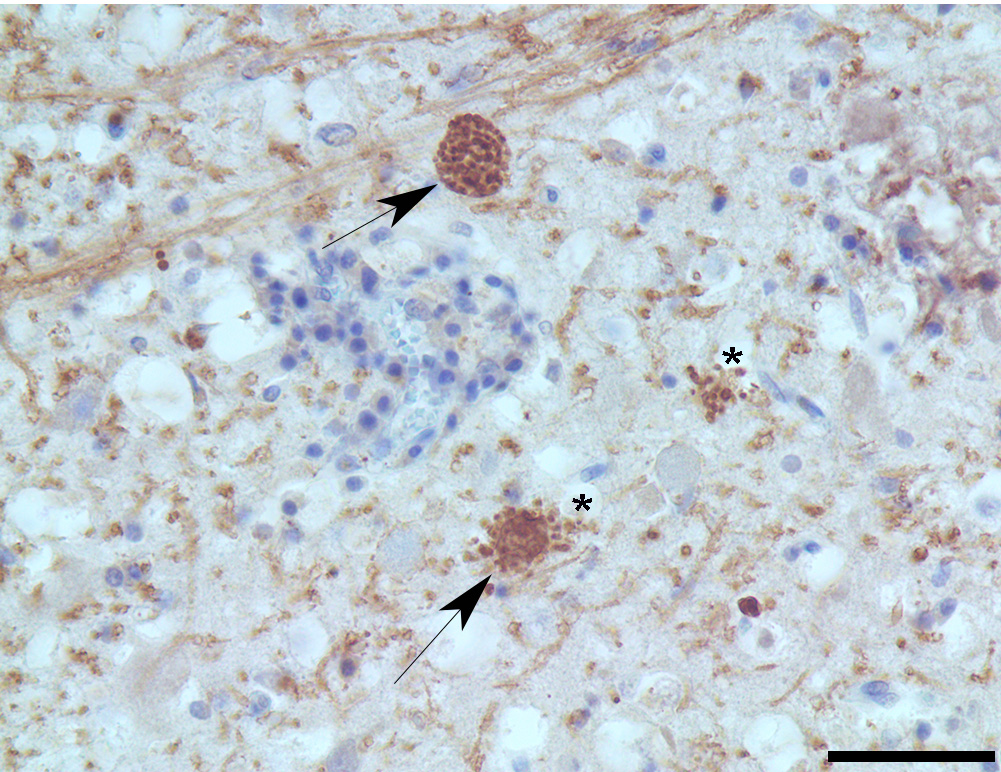Toxoplasma encephilitis in a Collared Peccary (Dicotyles tajacu): clinical and pathological findings
DOI:
https://doi.org/10.24070/bjvp.1983-0246.018011Keywords:
Encephalitis, Pathology, Peccary, Toxoplasma gondiiAbstract
Toxoplasmosis is a widespread zoonosis affecting numerous mammalian species. Wild suoids have been confirmed as susceptible hosts of Toxoplasma spp., and their meat is frequently consumed by hunters, their families, and domestic dogs, posing a growing foodborne risk in South America. We conducted a pathological study on a young captive Collared Peccary that showed neurological signs. Severe brain lesions were observed, including parenchymal necrosis with demyelination, gliosis, meningitis, and perivascular cuffing. Toxoplasma cysts containing tachyzoites, as well as free tachyzoites, were identified within these lesions. Additionally, focal necrosis with inflammatory infiltration was noted in the liver and heart, along with marked pulmonary edema. Immunohistochemistry for canine distemper virus in the brain was negative. To the best of our knowledge, this is the first report detailing the pathological findings of T. gondii infection in a wild suoid (Dicotyles tajacu).


